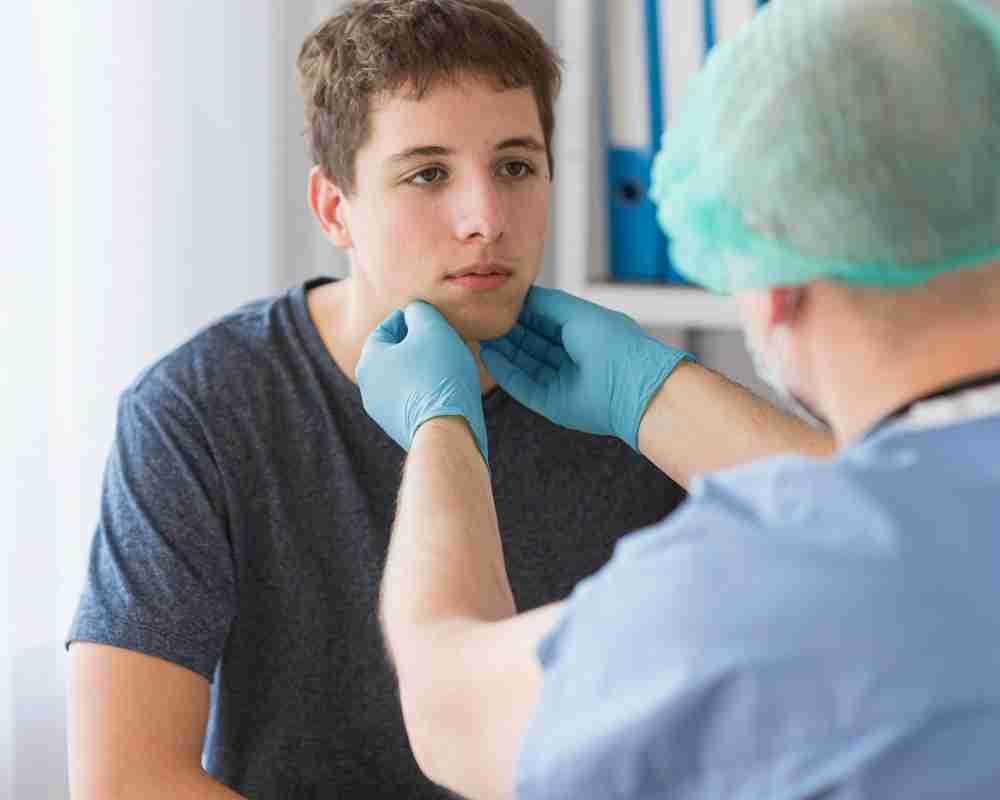When someone hears the word “cancer,” fear is often the first reaction. Add “fast-growing” to that, and it sounds even more alarming. But here’s the thing—not all fast-growing cancers are untreatable. Burkitt Lymphoma is one such example. It’s aggressive, yes, but with early diagnosis and timely treatment, outcomes can be surprisingly positive.
In this blog, we’ll break down what Burkitt Lymphoma is, why it spreads so fast, and how you can spot the early signs. We’ll also look at treatment options and what recovery might involve. Whether you’re researching for yourself or someone you care about, this guide will give you a clear, honest overview.
What Exactly Is Burkitt Lymphoma?
To put it simply, Burkitt Lymphoma is a rare type of non-Hodgkin lymphoma that starts in the B-cells—the white blood cells that help your body fight infections. It grows very fast, but the good news? It also responds well to treatment.
This cancer is named after Dr. Denis Burkitt, who first identified it in African children in the 1950s. While it’s most commonly found in children, especially boys, adults can develop it too.
Here’s a quick rundown of who might be affected:
- Children and young adults are more commonly diagnosed.
- Males are at a slightly higher risk.
- People with weakened immune systems, such as those with HIV, may also be more vulnerable.
Although rare, it’s a condition that deserves awareness, especially because of how quickly it moves. And speaking of that…
Why Is It Called a “Fast-Growing” Cancer?
The speed at which Burkitt Lymphoma cells divide is what sets it apart. In fact, the doubling time for this cancer is about 24 hours. That means the tumor size can double in just one day.
Yes, that sounds scary. But it also has a silver lining.
Because the cells grow so rapidly, they also absorb chemotherapy drugs more effectively. That’s one reason why treatment tends to work well, especially when started early.
However, this fast pace means there’s very little room for delay. That’s why it’s crucial to catch the symptoms early and act quickly.
So what should you be watching for?
Are There Different Types of Burkitt Lymphoma?
Absolutely. Burkitt Lymphoma isn’t a one-size-fits-all diagnosis. It appears in three distinct forms, each with its own background and characteristics.
-
Endemic Burkitt Lymphoma
- Found mostly in central Africa.
- Often linked to Epstein-Barr Virus (EBV).
- Common in children and presents with jaw or facial bone tumors.
-
Sporadic Burkitt Lymphoma
- Occurs worldwide, including the U.S. and Europe.
- More likely to start in the abdomen.
- Can affect both kids and adults.
-
Immunodeficiency-Related Burkitt Lymphoma
- Seen in individuals with weakened immune systems, such as those with HIV/AIDS.
- Often more complicated to treat due to underlying health conditions.
Understanding the type helps doctors choose the best treatment path. Still, regardless of type, the approach is usually aggressive—because it needs to be.
Up next, let’s talk about the red flags your body might throw up.
Common Symptoms: What Should You Look Out For?
Since Burkitt Lymphoma grows so quickly, the symptoms also show up fast. And they’re not always easy to link directly to cancer, especially early on.
Some common symptoms include:
- Swollen lymph nodes in the neck, armpit, or groin
- Unexplained fever
- Night sweats
- Sudden weight loss
- Fatigue that doesn’t go away
Depending on the type, you might also notice:
- Endemic type: Swelling around the jaw or face
- Sporadic type: Pain or swelling in the abdomen, often misread as a stomach issue
If these symptoms persist or escalate, it’s important not to ignore them. Don’t wait until the discomfort becomes unbearable. Getting a proper check-up could make all the difference.
Alright, so what causes this aggressive condition in the first place?
What Causes Burkitt Lymphoma?
Here’s the tricky part: there isn’t just one cause. But scientists and doctors have identified some common risk factors.
Known triggers include:
- Epstein-Barr Virus (EBV): Especially for the endemic type
- Weakened immune systems: People living with HIV/AIDS are more at risk
- Malaria exposure: In regions where malaria is widespread, the chances of Burkitt Lymphoma increase
It’s important to point out that many people with these risk factors never develop the disease. Likewise, someone can be diagnosed with Burkitt Lymphoma even without any obvious risk.
So if you’re dealing with this diagnosis, try not to blame yourself. It’s not something you could’ve easily predicted or prevented.
Let’s now talk about what happens when a doctor suspects Burkitt Lymphoma.
How Is Burkitt Lymphoma Diagnosed?
Because time is critical, doctors usually move fast once they suspect Burkitt Lymphoma. The goal is to confirm the diagnosis and begin treatment as soon as possible.
The diagnostic process may include:
- Physical exam: Checking for swollen nodes or abdominal masses
- Blood tests: To look for signs of abnormal white blood cells
- Imaging tests: CT, MRI, or PET scans to find tumor locations
- Biopsy: Tissue sample from a lymph node or tumor
- Bone marrow and spinal fluid testing: To see if the cancer has spread
You might feel overwhelmed with all the testing, and that’s completely normal. But remember, each step is part of building the best plan to fight it effectively.
Once the diagnosis is confirmed, treatment starts without delay.
Treatment Options: What Does Recovery Look Like?
Here comes the part many people want to know right away: Is it treatable?
Yes—very much so.
Most treatment plans involve:
- Combination chemotherapy: Often intense but highly effective
- Targeted therapy: Especially in advanced or complex cases
- Immunotherapy: To boost the body’s natural defense
- Supportive care: Managing side effects like nausea, infection risk, and fatigue
In children, cure rates can reach up to 90% when caught early. Adults may have a tougher road but can still see positive outcomes with prompt care.
After treatment, regular follow-ups are essential. Doctors will monitor for recurrence and manage any long-term side effects. Recovery isn’t just about killing cancer cells—it’s also about rebuilding your strength and confidence.
Conclusion: Moving Forward with Hope and Clarity
So, what have we learned about Burkitt Lymphoma?
- It’s aggressive, but treatable
- It comes in three forms: endemic, sporadic, and immunodeficiency-related
- Symptoms can vary but often show up quickly
- Causes are linked to viruses, immune status, and sometimes geography
- Diagnosis and treatment need to happen fast, but outcomes can be encouraging
If you or someone you know is navigating a diagnosis, remember: early action can make all the difference.
While you’re researching, you might also come across related conditions like Mantle Cell Lymphoma Clinical Trials. It’s worth exploring additional resources or trials, especially for rare cancers.
Ready to take the next step? Reach out to a medical professional, ask the hard questions, and don’t shy away from second opinions. The sooner you act, the better your chances.
You’re not alone in this.
- Burkitt Lymphoma: Fast-Growing but Treatable Cancer Nowadays
- Explore the characteristics, causes, symptoms, and modern treatment options for Burkitt lymphoma, a rapidly growing yet highly treatable form of non-Hodgkin lymphoma.
- Burkitt Lymphoma
Related posts:
 Affordable Online Healthcare: Save More with a CallonDoc Promo Code
Affordable Online Healthcare: Save More with a CallonDoc Promo Code
 Blue Grass Guppy: A Mesmerizing Addition to Your Aquarium Life
Blue Grass Guppy: A Mesmerizing Addition to Your Aquarium Life
 Famotidine Pepcid for Cats: What Pet Owners Need to Know for Their Feline Friend
Famotidine Pepcid for Cats: What Pet Owners Need to Know for Their Feline Friend
 Navigating Mental Health: The Importance of Black Therapists in New York for Bipolar Disorder and Depression Treatment
Navigating Mental Health: The Importance of Black Therapists in New York for Bipolar Disorder and Depression Treatment
 The Benefits of Home-Based ABA Therapy for Children with Autism
The Benefits of Home-Based ABA Therapy for Children with Autism
 How to Know If You Need to See a Gastro Doctor for Stomach Pain
How to Know If You Need to See a Gastro Doctor for Stomach Pain
 How Massage Therapy Can Improve Your Health: A Guide for Queens Residents
How Massage Therapy Can Improve Your Health: A Guide for Queens Residents
 A Complete Guide on the Pricing of the Composite Bonding in London
A Complete Guide on the Pricing of the Composite Bonding in London








